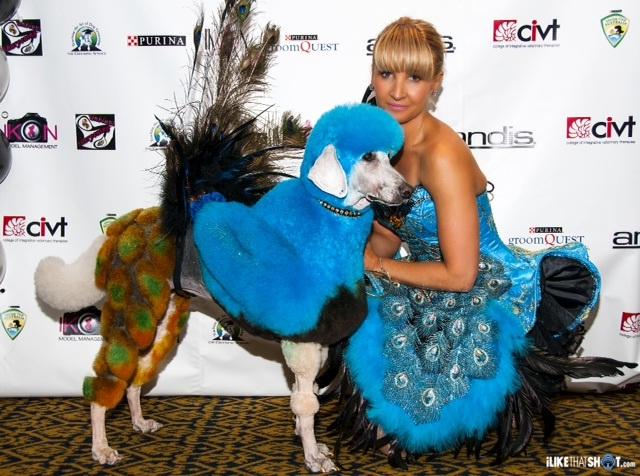In recent years, the trend of coloring dogs’ fur has gained popularity, sparking both curiosity and debate among pet owners and animal lovers alike. While some see it as a harmless and creative way to express love for their furry companions, others raise concerns about the ethical implications of such practices. This article aims to guide you through the multifaceted considerations surrounding the issue, offering insights into the potential impacts on a dog’s well-being and the moral responsibilities of pet ownership. By understanding both the benefits and the risks, we can make informed decisions that prioritize the health and happiness of our beloved pets. Let’s embark on this journey to explore whether it’s truly ethical to color a dog’s fur, keeping their best interests at heart.
Understanding the Canine Perspective: How Coloring Affects Your Dog
When considering the impact of coloring on our furry companions, it’s crucial to delve into how dogs perceive colors. Unlike humans, dogs primarily see the world in shades of blue and yellow, and their vision is similar to a person who is colorblind. This means that while we might be drawn to vibrant hues and intricate patterns, your dog might not appreciate—or even notice—the same nuances. Understanding this difference is vital for pet owners who wish to engage in the artistic transformation of their pet’s fur.
Before embarking on this creative endeavor, here are some aspects to consider from your dog’s perspective:
- Comfort: Ensure that any products used are pet-safe and non-toxic to avoid irritation or allergic reactions.
- Stress: Dogs are sensitive to changes in routine and environment. The process of coloring, which may involve washing, drying, and applying color, could be stressful for some pets.
- Social Interaction: Some dogs might receive more attention due to their colorful appearance, which can be overwhelming or enjoyable depending on the dog’s temperament.

Navigating Health and Safety: Ensuring Your Dogs Well-being
When considering whether to color your dog’s fur, it’s important to weigh both the potential benefits and ethical considerations. Safety should always be the top priority. Ensure that any products used are specifically designed for pets, as human hair dyes contain chemicals that can be harmful to dogs. Always conduct a patch test and consult your veterinarian before proceeding. Remember, some dogs may experience allergies or skin sensitivities, so it’s crucial to monitor your pet closely for any adverse reactions.
Beyond safety, consider your dog’s comfort and well-being. Here are a few key points to consider:
- Natural Behavior: Will coloring affect your dog’s natural behavior or cause unnecessary stress?
- Social Interactions: How might other animals or people react to the change in appearance?
- Personal Expression: Are you considering this for your enjoyment, or does it truly benefit your pet?
By keeping your dog’s needs at the forefront, you can make an informed decision that respects their well-being while still exploring creative expression.

Exploring Ethical Alternatives: Creative Expression Without Harm
In the quest to express creativity, it’s essential to consider the well-being of our furry companions. Altering a dog’s fur color might seem like a harmless endeavor, but it raises significant ethical questions. Before deciding to embark on this colorful journey, reflect on the following points:
- Animal Welfare: Prioritize the comfort and health of your pet. Certain dyes can cause allergic reactions or skin irritations. Opt for pet-safe, non-toxic products if you choose to proceed.
- Natural Behavior: Consider how this change might affect your dog’s natural behavior and interactions with other animals. A sudden change in appearance could cause confusion or stress.
- Consent and Communication: Remember, animals cannot consent to these changes. It’s crucial to respect their autonomy and ensure that any decision made is in their best interest.
By exploring alternatives that do not compromise the health and happiness of your pet, you contribute to a more ethical and compassionate form of creative expression. Whether through training, play, or styling with pet-friendly accessories, there are countless ways to celebrate your pet’s individuality without resorting to potentially harmful practices.

Making Informed Choices: Recommendations for Responsible Pet Owners
As responsible pet owners, it’s crucial to consider the well-being and safety of our furry friends when making decisions about their appearance. When it comes to coloring a dog’s fur, here are some key recommendations to ensure ethical and safe practices:
- Prioritize Safety: Always use products specifically designed for pets. Human hair dyes can contain chemicals that are harmful to dogs, leading to skin irritation or more severe health issues.
- Consult a Professional: If you decide to color your dog’s fur, seek the help of a professional groomer who is experienced in pet-safe coloring techniques. They can provide guidance on suitable products and application methods.
- Consider the Dog’s Comfort: Some dogs may feel anxious or uncomfortable during the coloring process. It’s essential to ensure your pet is calm and not stressed. Watch for any signs of distress or discomfort during and after the procedure.
- Temporary Options: Explore temporary or non-permanent color solutions, such as pet-safe chalks or sprays, which can offer a fun and colorful change without long-term effects.
By following these guidelines, pet owners can make informed decisions that respect their dog’s health and comfort while enjoying creative expression responsibly.

